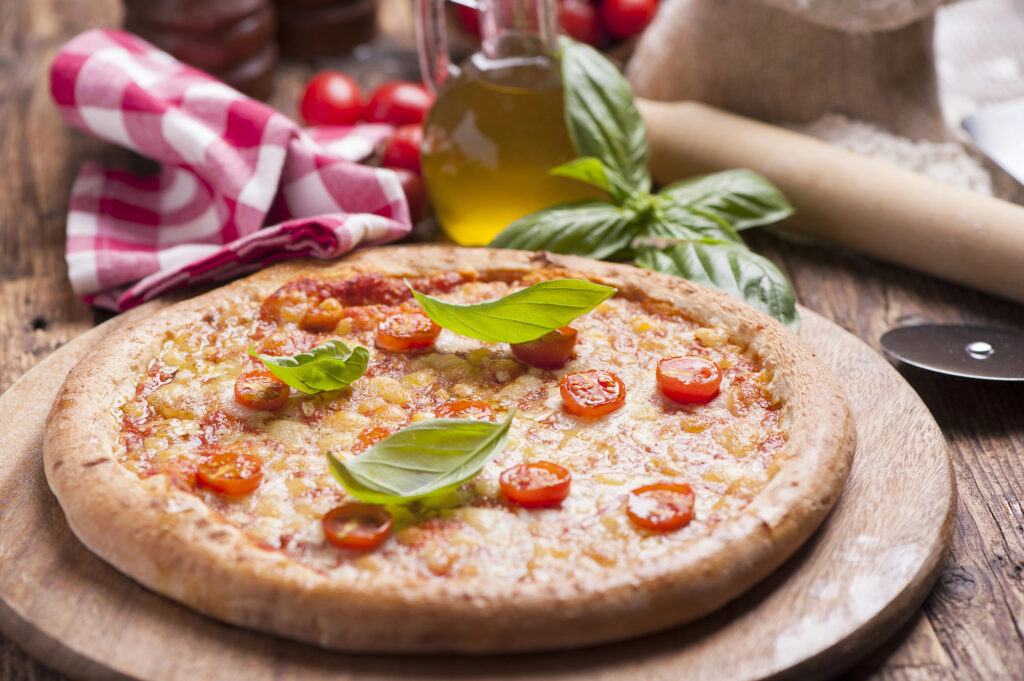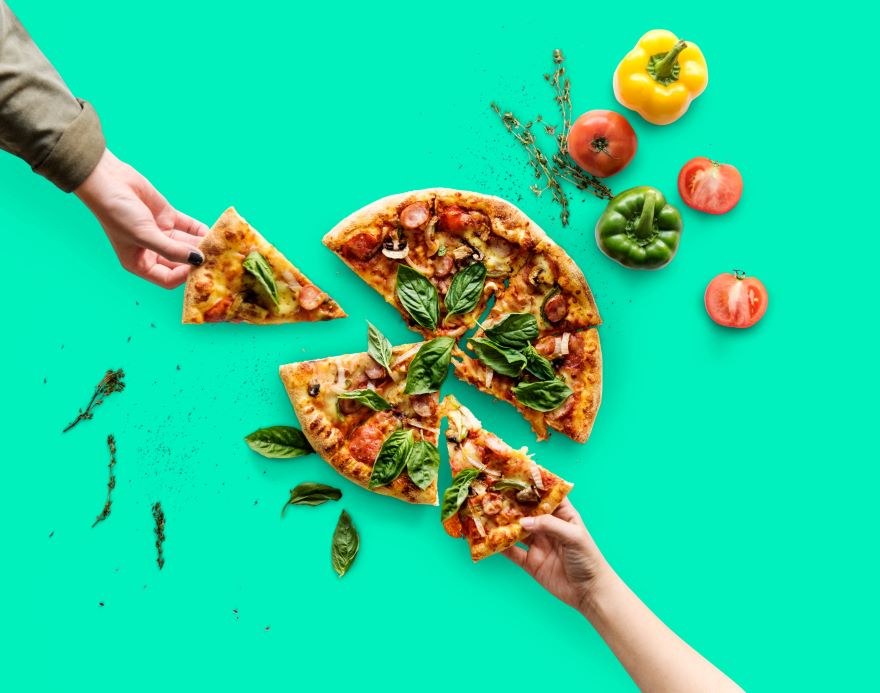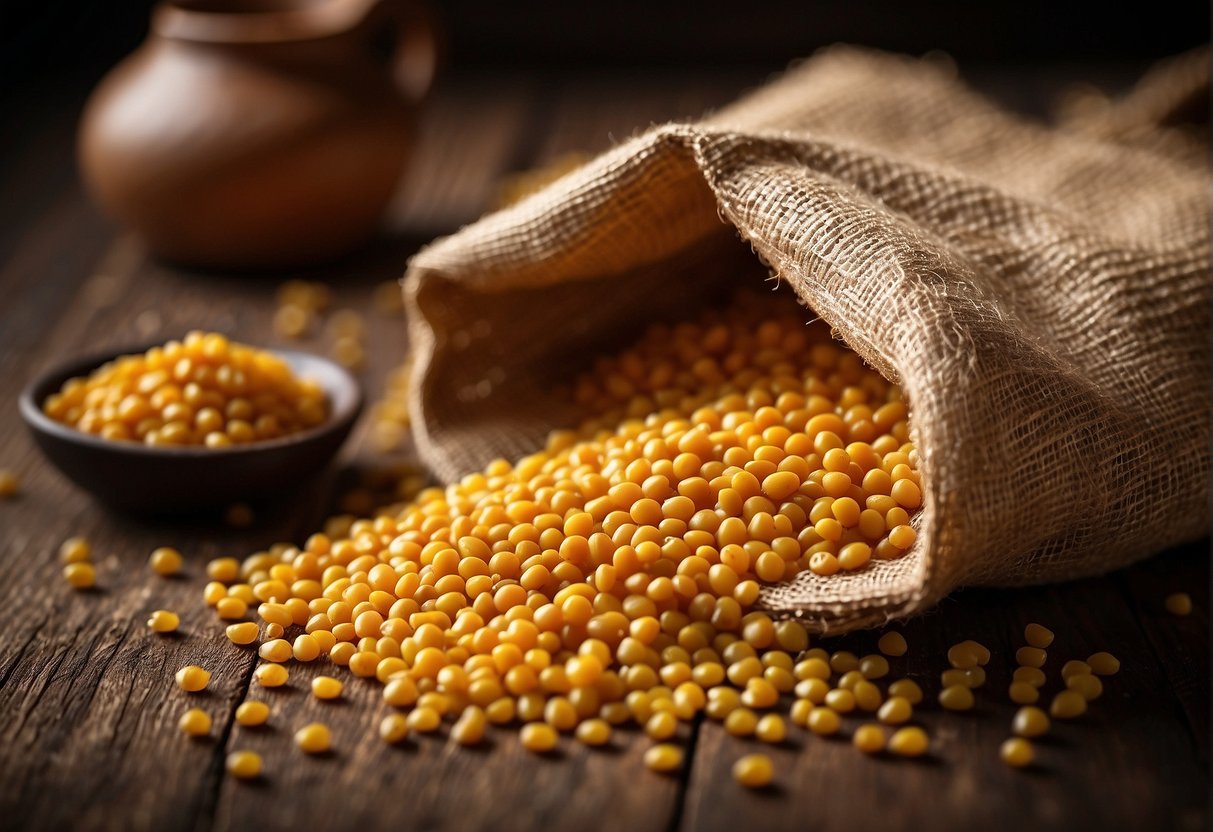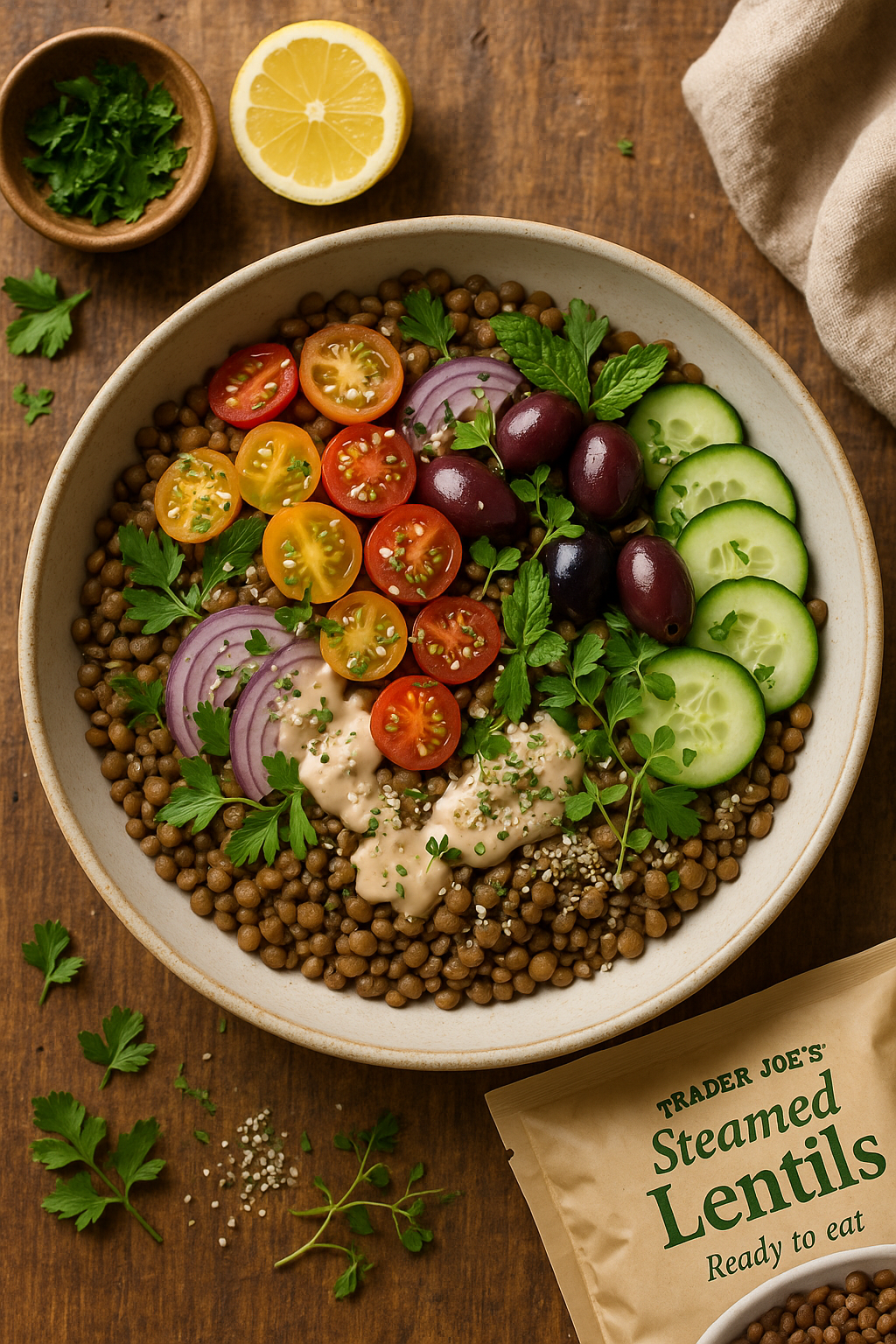Craving pizza but avoiding gluten and dairy? You don’t have to miss out! Gluten free dairy free pizza is a delicious solution for those with dietary restrictions. For many, pizza seems like a forbidden indulgence, but the traditional combination of wheat-based crust and dairy cheese is no match for the creative options available today.
The good news is that the culinary world has evolved significantly, with more allergy-friendly options available than ever before. Whether you have celiac disease, gluten sensitivity, lactose intolerance, or a dairy allergy, there are delicious alternatives waiting for you to discover.

This comprehensive guide covers everything you need to know about gluten-free dairy-free pizza—from making the perfect homemade version to finding the best store-bought and restaurant options. We’ll explore ingredients, techniques, and tips to ensure your pizza experience remains satisfying without compromising your dietary needs.
Navigating Special Dietary Needs
Gluten-Free Basics: Gluten is a protein in wheat, barley, and rye that gives dough elasticity. For those with celiac disease, it triggers immune responses that damage the small intestine. Others with non-celiac sensitivity experience discomfort without intestinal damage. A gluten-free diet requires avoiding wheat, barley, and rye products, including traditional pizza crusts.
Dairy-Free Essentials: A dairy-free diet excludes all animal milk products. People avoid dairy due to lactose intolerance (inability to digest milk sugar) or milk protein allergies. This means eliminating cheese, butter, and cream—ingredients central to conventional pizza.
Combined Restrictions: Many follow both diets due to multiple sensitivities, autoimmune conditions, or ethical choices. Fortunately, with today’s culinary innovations, this combination doesn’t mean sacrificing flavor or enjoyment.
Ingredients for the Perfect Gluten-Free Dairy-Free Pizza
Choosing the Right Flour
The foundation of any great gluten-free dairy-free pizza is its crust, and selecting the right gluten-free flour blend is crucial for success. Unlike traditional pizza dough that relies on gluten for its stretchy, chewy texture, gluten-free crusts need alternative ingredients to achieve similar results.
Popular gluten-free flour options include:
- Rice flour blends for their light texture and mild flavor
- Almond flour which adds protein and moisture
- Chickpea flour which provides protein and fiber
- Cassava flour which offers flexibility similar to wheat flour
- Sorghum flour which brings a slightly sweet taste to your crust
Most successful gluten-free pizza doughs combine several flour types with starches like tapioca, potato, or arrowroot. These starches help create structure and elasticity in the absence of gluten.
Binding agents are essential in gluten-free baking. While xanthan gum (1 tsp per cup of flour) is standard, alternatives include psyllium husk powder, ground flaxseeds, chia seeds, or even cooked pureed white rice or tapioca starch with careful moisture control.
Dairy-Free Cheese Alternatives
Finding the perfect dairy-free cheese for pizza can be a game-changer. Today’s alternatives have improved dramatically in both taste and meltability.
The market offers several excellent dairy-free cheese options for pizza:
- Daiya provides excellent melting properties that work well on hot pizza
- Violife offers a creamy texture with minimal aftertaste that appeals to many former cheese lovers
- Miyoko’s cashew-based cheeses bring an artisanal quality to your homemade pizza
- Follow Your Heart provides a classic option with good stretch
- Chao (by Field Roast) creates a coconut-based cheese with authentic flavor

For melting performance specifically, Daiya and Violife consistently rank highest among consumers and chefs. Some brands offer specialized “pizza shreds” designed specifically for optimal melting. The melting quality can vary significantly between brands and even between product lines from the same manufacturer, so experimentation is key.
For homemade options, cashew-based cheeses provide richness and creaminess. Soaking raw cashews overnight and blending them with nutritional yeast, lemon juice, and seasonings creates a versatile cheese sauce. Nutritional yeast alone can also add a cheesy flavor to pizzas without trying to replicate the texture of melted cheese.
Essential Toppings & Sauces
The beauty of pizza lies in its versatility, and toppings are where you can truly personalize your creation. When making gluten-free dairy-free pizza at home, you have complete control over the ingredients to ensure they meet your dietary needs.
For sauces, options include:
- Classic tomato sauce (check ingredients for hidden gluten or dairy)
- Dairy-free pesto made with olive oil and nutritional yeast
- Garlic-infused olive oil for a simple yet delicious base
- BBQ sauce for a tangy foundation for southwestern-inspired pizzas
Protein options include:
- Many pepperoni brands are naturally gluten-free (always verify ingredients)
- Grilled chicken adds lean protein
- Plant-based meat alternatives for those following a vegan diet
- Seasoned tofu crumbles that absorb flavors well
Vegetable toppings not only enhance flavor but also add nutritional value:
- Sautéed mushrooms for umami depth
- Caramelized onions for sweetness
- Fresh greens like spinach or arugula
- Roasted red peppers, artichoke hearts, and olives for complexity
Remember that some packaged ingredients may contain hidden gluten or dairy, so always check labels carefully before using them.
Step-by-Step Recipe: Homemade Gluten-Free Dairy-Free Pizza
Crust Preparation
Ingredients:
- 2 cups gluten-free flour blend
- 1 tablespoon active dry yeast
- 1 teaspoon baking powder
- 1 teaspoon salt
- 1 tablespoon olive oil
- 1 teaspoon apple cider vinegar
- 2 teaspoons honey or maple syrup
- 1 cup warm water (110°-115°F)
- 1 teaspoon xanthan gum (if not already in your flour blend)
Instructions:
- Start by activating the yeast. In a small bowl, combine warm water with honey or maple syrup. Sprinkle yeast over the mixture and let it sit for 5-10 minutes until foamy.
- Meanwhile, in a large bowl, whisk together your gluten-free flour, baking powder, salt, and xanthan gum (if using). Ensuring these dry ingredients are well combined will help create a consistent texture in your finished crust.
- Next, pour the activated yeast mixture, olive oil, and apple cider vinegar into the dry ingredients. Mix thoroughly until a soft dough forms. The apple cider vinegar may seem unusual, but it helps improve the texture of gluten-free dough.
- Turn the dough onto a lightly floured surface (use gluten-free flour) and knead for 3-5 minutes until smooth. The texture will be different from traditional dough—slightly stickier but still workable. Don’t overwork the dough, as gluten-free flours can become dense with excessive handling.
- Place the dough in an oiled bowl, cover with a damp cloth or plastic wrap, and let rise in a warm place for 45-60 minutes. While gluten-free dough won’t double in size like conventional dough, it should still expand somewhat during this first rise.
Making gluten-free pizza dough has never been easier with the KitchenAid Artisan Stand Mixer. With its powerful motor and versatile attachments, this mixer will help you knead gluten-free dough effortlessly, ensuring a smooth, elastic texture for your crust. The durable, sleek design fits beautifully into any kitchen, and its multiple speed settings give you complete control over your ingredients. Save time and effort while making pizza with this kitchen essential!
KitchenAid Artisan Series 5 Quart Tilt Head Stand Mixer with Pouring Shield KSM150PS, Contour Silver
- 10-speed slide control ranges from a very fast whip to a very slow stir. Cord length : 36 Inches
- Besides being very useful for making baked goods like cakes, muffins, and breads (and don’t forget icing!), this is fantastic for blending meat!
- Handles bread dough easily and no sticking on the sides of the bowl.
- Quality. Sturdy and heavy.
Assembling the Pizza
- Begin by preheating your oven to 450°F (230°C) and place a pizza stone or baking sheet inside to heat up. The high temperature is crucial for achieving a crispy crust.
- After the first rise, gently press the dough into a circle on parchment paper. For easier handling, you can place another piece of parchment on top and use a rolling pin to create an even thickness. Aim for about ¼ inch thickness for a balanced crust that’s neither too thick nor too thin.
- Pre-bake the crust by sliding the parchment with the dough onto your preheated pizza stone or baking sheet. Bake for 8-10 minutes until the crust just begins to firm up and slightly brown. This pre-baking step is essential for gluten-free crusts to ensure they cook completely and don’t become soggy when toppings are added.
- Remove the partially baked crust from the oven. Spread your sauce of choice evenly, leaving a small border for the crust. Add your dairy-free cheese and selected toppings, being mindful not to overload the pizza, which can prevent proper cooking.
- Return the pizza to the oven for another 10-12 minutes, or until the crust is golden brown and the toppings are cooked through. Watch closely during the final minutes to ensure your dairy-free cheese melts but doesn’t burn.

Baking Tips
Getting the perfect crispy-yet-chewy crust requires some finesse when working with gluten-free ingredients:
High heat is essential for creating a better crust texture. Use a temperature of at least 450°F to achieve that desirable crisp exterior.
Use a pizza stone if possible, as it conducts heat evenly and helps draw moisture from the dough. If you don’t have a stone, a preheated inverted baking sheet can work as an alternative.
Avoid overloading with toppings, as too many can make a gluten-free crust soggy. Be particularly cautious with wet ingredients like fresh tomatoes or pineapple.
The two-stage baking method of pre-baking the crust before adding toppings ensures it cooks through properly and prevents the dreaded soggy center that can plague gluten-free baking.
Manage moisture carefully by sautéing vegetables before adding them to remove excess water that might otherwise seep into the crust.
Allow proper cooling time by letting the pizza rest for 3-5 minutes before slicing. This pause allows the crust to set and makes for cleaner cuts.
Check for doneness by looking at the bottom of the crust, which should be nicely browned and firm to the touch. A pale bottom usually indicates an undercooked crust.
For dairy-free cheese, add it in the last few minutes of baking to prevent burning or drying out. Some plant-based cheeses benefit from a light spray of oil to help with melting and create that stretchy pizza cheese experience.
For the ultimate versatility, the Breville Smart Oven Air Fryer is perfect for cooking your gluten-free, dairy-free pizza. With its convection oven, air fry, and dehydrate functions, this compact appliance does it all. The high-performance cooking ensures that your gluten-free crust comes out perfectly crispy, and the oven’s spacious interior allows you to cook multiple pizzas at once. This is a game-changer for home chefs who want both quality and convenience.

Breville BOV860BSS Smart Oven Air Fryer and Convection Oven, Brushed Stainless Steel
- The Breville Smart Oven Air Fryer and Convection Oven with Element iQ System delivers top performance and versatility; Air fry and choose from 11 cooking functions; Super convection reduces cooking time by up to 30% and delivers crispy, air-fried foods
- ELEMENT iQ SYSTEM: With 5 independent quartz elements, smart algorithms steer oven and fryer’s power where and when it’s needed to create a tailored cooking environment; Sensing and digital PID temperature control eliminate cold spots for precise cooking
- DEDICATED AIR FRY SETTING: Smart Oven Air Fryer turns out guilt-free French fries, chicken wings and more; Higher temperatures combine with super convection (maximized air flow) to deliver crispy golden, air-fried foods to your home kitchen
- SUPER CONVECTION TECHNOLOGY: Convection oven functionality can reduce cooking time by up to 30%; Speeds cooking process by raising hotter air and sinking colder, less dense air for quicker heating; Serve dinner sooner and spend less time in the kitchen
Achieving Restaurant-Quality Pizzas at Home
Take your gluten-free and dairy-free pizza game to the next level with the Ooni Fyra 12 Wood Fired Outdoor Pizza Oven. This compact and portable pizza oven heats up to 950°F (500°C) in just 15 minutes, allowing you to create perfectly crispy, restaurant-quality pizzas in your own backyard. Its stainless steel body and cordierite stone baking board ensure even heat distribution for exceptional results every time.

For those who desire versatility, the Ooni Karu 12 is a top choice. It allows you to cook with wood, charcoal, or gas (with an additional gas burner attachment). This flexibility ensures you can achieve that authentic wood-fired flavor, whether you’re in your backyard or camping. It heats up to 950°F (500°C) in just 15 minutes and cooks 12-inch pizzas in 60 seconds. Weighing only 26.5 lbs (12 kg), it’s portable and perfect for outdoor cooking adventures.

Ooni Karu 12 Multi-Fuel Pizza Oven – Essential Pizza Oven Bundle – Save 10% on Ooni 12″ Perforated Pizza Peel
- Professional Pizza Prep – This bundle includes the Ooni 12″ Perforated pizza peel made from high quality aluminium our perforated pizza paddle is the professional’s tool of choice – Giving all pizza lovers the perfect pizza board to stretch out dough, add their favourite toppings and launch it in their Ooni Pizza oven!
- Done in 60 Seconds – Fire up the Ooni Karu 12 with wood or charcoal straight out the box, or use with the Ooni Gas Burner attachment (sold separately) to cook with gas.
- Hot Features – A custom designed fuel tray that maximises airflow and delivers a powerful blast of searing flame allows the Ooni Karu 12 pizza oven to maintain the ultra-high temperatures – load it up with real wood or charcoal, with no excess ash to clean.
- The Karu 12 will be ready to cook in 15 minutes reaching a massive 950°F – Cooking authentic stone baked pizza in just 60 seconds!
Best Store-Bought Gluten-Free Dairy-Free Pizzas
Frozen Pizza Brands
For those busy nights when you don’t have time to make pizza from scratch, several brands offer excellent frozen options that cater to both dietary restrictions:
Daiya pizzas feature a gluten-free crust and their own dairy-free cheese. Their product line includes classic flavors like Margherita, Supreme, and Cheeze Lover’s.
Caulipower offers cauliflower-based gluten-free crusts with dairy-free options. Their plain crust is perfect for adding your own toppings.
Against the Grain produces frozen pizzas with a unique gluten-free crust made with tapioca starch. Some varieties are dairy-free or can be purchased as plain crusts for customization.
American Flatbread Vegan Harvest features a thin, crispy gluten-free crust with tomato sauce and dairy-free cheese.
Sweet Earth offers plant-based pizzas with gluten-free options that are also dairy-free. Their products often incorporate creative flavor combinations and nutrient-dense ingredients.
When selecting frozen pizzas, always verify ingredients as formulations can change, and cross-contamination risks may vary between products.
Pre-Made Crusts
If you want the convenience of a ready-made crust but prefer to add your own toppings, these options are worth trying:
Simple Mills produces an almond flour crust mix that creates a flavorful base. The nutty undertones complement a wide range of toppings and sauces.
Schär is known for high-quality gluten-free products, and their pizza crusts are widely available and consistently reliable. Their par-baked crusts require minimal preparation time.
Wholly Wholesome offers frozen gluten-free pizza dough that’s also dairy-free. Their product allows for more flexibility in shaping and thickness compared to pre-formed crusts.
Banza makes crusts from chickpea flour that are gluten-free and provide extra protein.
Bob’s Red Mill pizza crust mix is gluten-free and can be prepared without dairy ingredients. Their products are widely available and trusted for quality in the gluten-free community.
Where to Find Gluten-Free Dairy-Free Pizza at Restaurants
National Chains
Several pizza chains now offer gluten-free dairy-free pizza options, though availability and preparation methods vary:
MOD Pizza has become a favorite for those with dietary restrictions. They offer gluten-free crusts and dairy-free cheese alternatives, with a build-your-own concept that’s ideal for customizing to your specific needs. Their staff changes gloves and uses separate utensils for allergen-free preparations.
Blaze Pizza provides gluten-free crusts and vegan cheese, with staff trained in allergen protocols. Their assembly-line format allows you to watch your pizza being made and ensure proper handling.
Mellow Mushroom features gluten-free crusts and vegan cheese at most locations. They’re known for having more extensive allergen training than many other chains.
While Domino’s and Pizza Hut both offer gluten-free crusts, they typically don’t recommend them for those with celiac disease due to cross-contamination risks in their kitchens. Dairy-free cheese options are limited at these chains, so you may need to order without cheese or bring your own to add at home.
&pizza, a growing chain in the eastern United States, offers gluten-free crusts and dairy-free cheese options. They focus on unique flavor combinations and quality ingredients.
Always inquire about food preparation practices, as many restaurants prepare gluten-free pizzas in the same area as regular pizzas, creating cross-contamination risks for those with severe allergies or celiac disease.
Local Pizzerias
Independent pizzerias are increasingly accommodating dietary restrictions, often with more flexible kitchen practices than large chains. When dining at local establishments:
Call ahead to ask about their gluten-free and dairy-free options before visiting. This saves time and potential disappointment, and may allow the restaurant to prepare for your visit.
Be specific about your needs by explaining whether you have an allergy, intolerance, or preference. This helps staff understand the severity of your restrictions and the level of precaution required.
Ask about preparation methods, inquiring if they use separate preparation areas, utensils, and ovens for allergy-friendly pizzas. Some small pizzerias may actually have better allergen protocols than chains because they can more easily adapt their processes.
Check for dedicated allergen menus or guides, as many restaurants now maintain these resources to help customers navigate their options safely and easily.
Consider visiting during off-peak times when possible. Coming in during less busy hours may allow staff to take extra precautions with your order and reduce cross-contamination risks.
Making Gluten-Free Dairy-Free Pizza Work For You

When it comes to creating the perfect pizza, success lies in understanding a few key principles:
Master the Art of Binding. Experiment beyond xanthan gum with alternatives like psyllium husk powder, ground flaxseeds, or chia seeds. Each creates unique textures that might work better for your preferences.
Discover Your Ideal Cheese Alternative. The dairy-free cheese market has evolved dramatically in recent years. While Daiya and Violife consistently perform well for melting, cashew-based options often provide superior flavor. Don’t be afraid to customize by combining different brands or adding a light spray of oil to enhance melting.
Focus on Ingredient Quality. A nutritious pizza depends more on your ingredient choices than its “free-from” status. Incorporate protein-rich flours like almond or chickpea instead of relying solely on starches. Build flavor depth with herbs and high-quality olive oil to compensate for traditional cheese and wheat notes. Remember that gluten-free pizza isn’t automatically healthier than conventional pizza – many commercial products contain additional fats, sugars, and refined starches to improve taste and texture.
Perfect Your Technique. The secret to a crispy crust lies in your baking method. Always pre-bake your crust, use a pizza stone if possible, maintain high oven temperatures, and be mindful of topping moisture content. These small adjustments make the difference between a soggy disappointment and a perfectly crisp masterpiece.
Key Takeaways
Embracing a gluten-free dairy-free lifestyle doesn’t mean saying goodbye to one of America’s favorite foods. With the right ingredients, techniques, and knowledge, you can enjoy delicious pizza that meets your dietary needs without sacrificing flavor or texture.
Whether you choose to craft your own creation from scratch, rely on convenient store-bought options, or venture out to restaurants with allergen-friendly menus, there’s a gluten-free dairy-free pizza option to satisfy your craving.
Remember that perfecting your ideal pizza might take some experimentation—different flour blends, cheese alternatives, and toppings combinations will yield varied results. Don’t be afraid to try new products and techniques until you discover your perfect pie.
Try making your own gluten-free dairy-free pizza tonight! Not only will you enjoy a meal tailored exactly to your preferences, but you’ll also gain confidence in navigating your dietary restrictions with creativity and deliciousness.

*We may earn a commission for purchases made using our links. Please see our disclosure to learn more.



